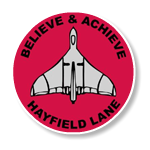Key Maths facts
By the end of year 3, children are expected to be able to do the following in Maths:
Place value:
- Compare and order numbers up to 1000
- Read and write numbers up to 1000 in numerals and words
- Find 10 or 100 more or less than a given number
- Recognise the place value of each digit in a three digit number (hundreds, tens, ones)
- Solve number problems and practical problems involving place value
Addition and subtraction:
- Add and subtract numbers mentally, including: a 3 digit number and ones, a 3 digit number and tens, a 3 digit number and hundreds
- Add and subtract numbers with up to 3 digits using formal written methods of column addition and subtraction
- Solve problems including missing number problems using number facts, place value and more complex addition and subtraction
Multiplication and division:
- Added to the 2, 5 and 10 times tables, Year 3 children learn multiplication and division facts for the 3, 4 and 8 times tables.
- They will also be taught that there is a connection between the 2, 4 and 8 times tables through doubling and halving, e.g. 2x4=4 so 4x4=8.
Fractions:
- Count up and down in tenths: recognise that tenths arise from dividing an object into 10 equal parts and in dividing one-digit numbers or quantities by 10
- Recognise, find and write fractions of a discrete set of objects: unit fractions and non-unit fractions with small denominators
- Recognise and show, using diagrams, equivalent fractions with small denominators
- Compare and order unit fractions and fractions with the same denominators
- Add and subtract fractions with the same denominator within one whole
Measurement:
- Measure, compare, add and subtract: lengths (m/cm/mm): mass (kg/g) volume/capacity (l/ml) including measuring the perimeter of simple 2D shapes
- Add and subtract amounts of money to give change using both £ and p in practical contexts
- Tell and write the time from an analogue clock, including using Roman numerals from 1 to X11 and 12 hour and 24 hour clocks
- Record and compare time in respect to seconds, minutes and hours
- Know the number of days in a month, the number of months in a year and the number of days in a year – including a leap year
Geometry:
- Identify right angles, recognise that two right angles make a half-turn, three make three quarters of a turn and four a complete turn: identify whether angles are greater than or less than a right angle
- Identify horizontal and vertical lines and pairs of perpendicular and parallel lines
- Draw 2D shapes using mathematical language
- Recognise 2D and 3D shapes in different positions and orientation and describe them.
Statistics:
- Interpret and present data using bar charts, pictograms and tables, including solving one step and 2 step questions using information presented in scales bar charts and pictograms and tables.
